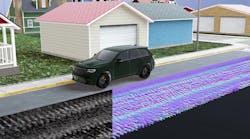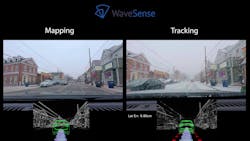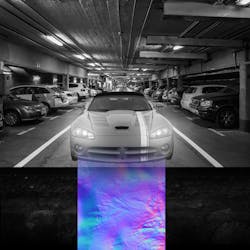Download this article in .PDF format.
Sensors are key components for autonomous vehicles as well as vehicles with advanced driver-assistance systems. As I commented in my November 2019,1 the typical radar, lidar, and vision sensors may not be enough, and ground-penetrating radar offers an intriguing alternative.
WaveSense, founded in 2017, describes itself as the first company to offer self-driving vehicle navigation based on ground-penetrating radar at commercial scale. The company is the worldwide exclusive licensee of IP generated at MIT Lincoln Laboratory, where the technology was developed for military applications and deployed in Afghanistan in 2013. The technology allowed 9-ton military vehicles to stay on previously mapped routes despite unmarked lanes and poor visibility from sand and dust.
He said the need for reliable, precise positioning for autonomous cars, trucks, and robots as well as vehicles with ADAS is skyrocketing, with passenger vehicles increasingly featuring autonomous parking, active lane keeping, and other positioning capabilities in all sorts of conditions.
GPS, he added, can be unreliable and unstable. And with lidar- and camera-based approaches, you need three things to be true: you need a lot of roadside features, which may be lacking on an open highway; you need differentiation, which may be lacking in a parking garage with repetitive columns; and you need the mapped environment to be static over time, which may not be possible because of changes in foliage or inclement weather.
WaveSense hasn’t set pricing yet for the technology, but Bolat put the BOM cost at less than $100 per vehicle. He said the ground-penetrating radar could knock out some of the lidar cost. The unit itself measures two feet by two feet by one inch and delivers a finished position. He said the trucking sector might want to retrofit existing vehicles, but the company’s primary targets are automakers’ future vehicle platforms. Pilots in conjunction with automakers are ongoing, he said.
REFERENCE
1. Nelson, Rick, “Three-way race to the future,” EE-Evaluation Engineering, November 2019, p. 2.



